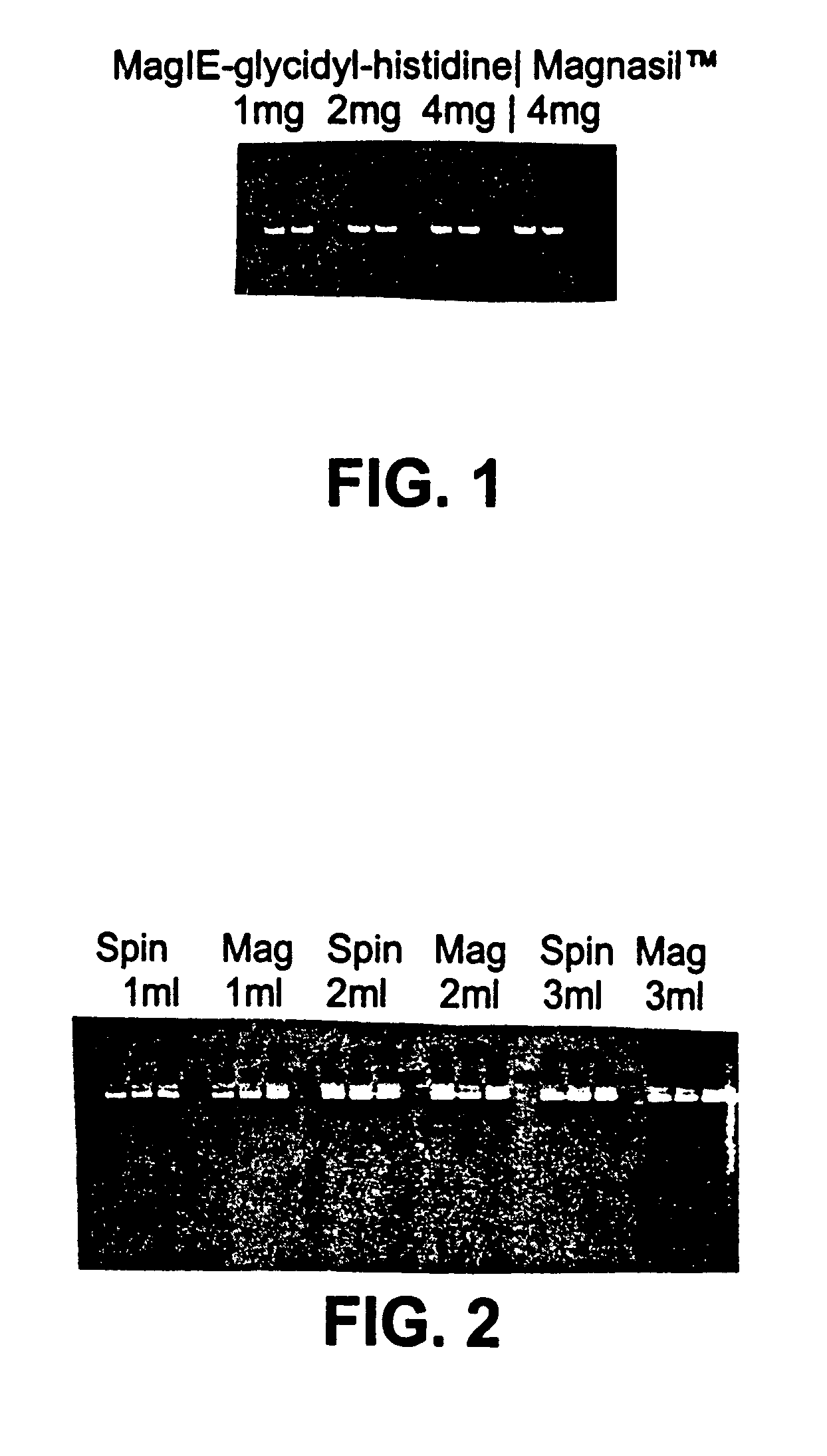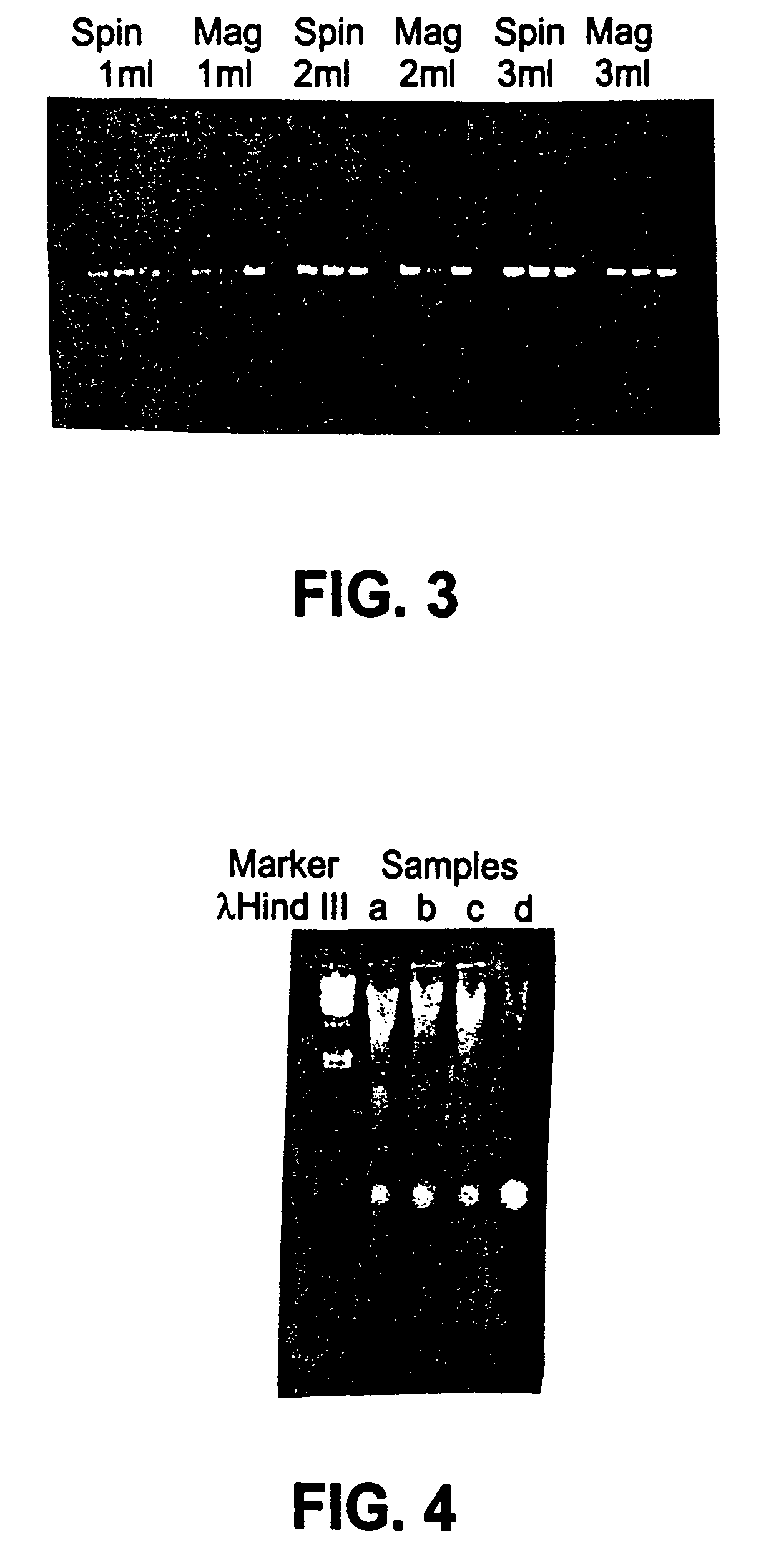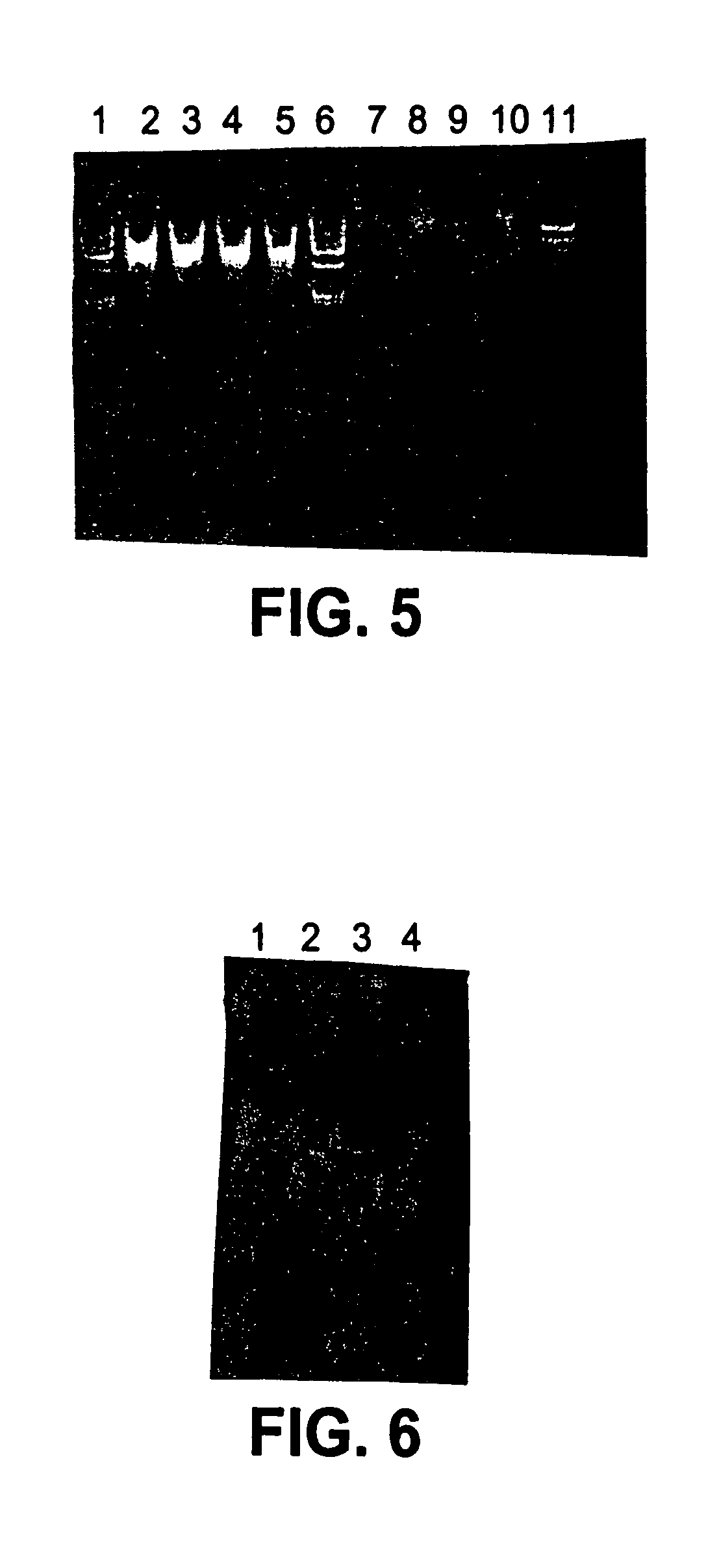Cell concentration and lysate clearance using paramagnetic particles
a technology of paramagnetic particles and cell concentration, applied in the field of magnetically responsive particles, can solve the problems of limiting the utility of automated systems of solid phases, neither centrifugation nor filtration is amenable to automation, and limiting the utility of such solid phases in automated systems
- Summary
- Abstract
- Description
- Claims
- Application Information
AI Technical Summary
Benefits of technology
Problems solved by technology
Method used
Image
Examples
example 1
[0062]Samples of target nucleic acids isolated according to procedures described in Examples below were analyzed for contamination with non-target nucleic acids, and for size as follows. The samples were fractionated on an agarose gel of appropriate density (e.g., a 1.0% agarose gel was used to analyze plasmid DNA, while a 1.5% agarose gel was used to analyze RNA). The fractionated nucleic acid was visualized using a fluorescent label or by dying the gel with a DNA sensitive stain, such as ethidium bromide or silver staining. The resulting fractionated, visualized nucleic acid was either photographed or visualized using a fluorimager and the resulting image printed out using a laser printer.
[0063]In some cases, size standards were fractionated on the same gel as the target nucleic acid, and used to determine the approximate size of the target nucleic acid. In every case where a gel assay was done, the photograph or fluorimage of the fractionated nucleic acid was i...
example 2
Absorption Spectrophotometry
[0064]Samples of target nucleic acids isolated from various media, as described below, were also analyzed using absorption spectrophotometry. Absorption measurements were taken at wavelengths of 260, 280, and 230 nanometers (nm). A260 / A280 absorption ratios were computed from the measurements. An A260 / A280 of greater than or equal to 1.80 was interpreted to indicate the sample analyzed therein was relatively free of protein contamination. The concentration of nucleic acid in each sample was determined from the absorption reading at 260 nm (A260).
example 3
Synthesis of Glycidyl-Histidine and Glycidyl-Alanine Silica Magnetic Ion Exchange Particles
[0065]Various two different pH dependent ion exchange ligands, glycidyl-histidine and glycidyl-alanine, were attached to porous silica magnetic particles according to the following procedure. The silica magnetic pH dependent ion exchange particles synthesized as described herein were used to concentrate cells, clear lysates, or isolate target nucleic acids, as described in subsequent Examples, below.
A. Preparation of Glycidyl Modified Silica Magnetic Particles
1. Silica magnetic particles were activated by heating under vacuum at 110° C. overnight.
2. 10 g of the activated particles were suspended in 100 ml of toluene in a flask, and 3.2 ml of 3-glycidylpropyl-trimethoxysilane was added thereto.
3. The flask containing the mixture was fitted with a condenser and the reaction was refluxed for 5 hr. After cooling to room temperature, the reaction mixture sat for 48 hr at room temperature.
[0066]4. T...
PUM
| Property | Measurement | Unit |
|---|---|---|
| particle size | aaaaa | aaaaa |
| median particle size | aaaaa | aaaaa |
| median particle size | aaaaa | aaaaa |
Abstract
Description
Claims
Application Information
 Login to View More
Login to View More - R&D
- Intellectual Property
- Life Sciences
- Materials
- Tech Scout
- Unparalleled Data Quality
- Higher Quality Content
- 60% Fewer Hallucinations
Browse by: Latest US Patents, China's latest patents, Technical Efficacy Thesaurus, Application Domain, Technology Topic, Popular Technical Reports.
© 2025 PatSnap. All rights reserved.Legal|Privacy policy|Modern Slavery Act Transparency Statement|Sitemap|About US| Contact US: help@patsnap.com



